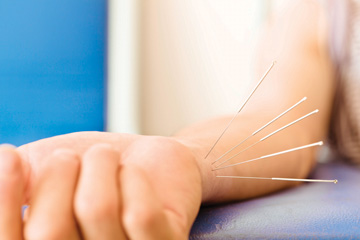The updated guidelines contain no major changes in identifying patient-specific risk factors for PONV in adults. These still include female sex, a history of PONV and/or motion sickness, non-smoking status and younger age. Certain procedures
are also associated with increased rates of PONV, such as laparoscopic, robotic and breast surgeries. In pediatrics, ENT surgeries, middle ear procedures and tonsillectomies are associated with an increased risk. Patients who have a history
of PONV but no additional risk factors will also likely experience nausea/vomiting if you don’t intervene. That’s why it pays to take a preemptive approach when patients display any risk factors or have a history of PONV.
There are also anesthetic risk factors that shouldn’t be ignored. Volatile agents such as sevoflurane, desflurane, isoflurane and nitrous oxide can cause PONV. The effect of volatile anesthetics on PONV has been shown to be dose-dependent
and particularly prominent in the initial two to six hours following surgery. Our previous guidelines cited the use of nitrous oxide as a likely cause of PONV; however, a recent study found the risk of PONV due to nitrous oxide appears
to be duration-dependent. For instance, in anesthesia duration lasting less than an hour, the Number Needed to Treat (NNT) to prevent PONV from nitrous oxide avoidance is 128; the NNT decreases to 23 in anesthesia duration lasting longer
than an hour, and to nine in anesthesia duration lasting more two hours.
We also know that opioids increase the risk of PONV in a dose-dependent manner. In other words, the negative effect appears to last for as long as opioids are used in the postoperative period. The incidence of PONV is lower when opioid-free
total intravenous anesthesia (TIVA) with propofol and multimodal pain management is administered. Finally, the use of neostigmine, an acetylcholinesterase inhibitor, is also associated with a higher incidence of nausea and vomiting.
The guidelines now recommend giving at least two antiemetics to patients with PONV risk factors, instead of the single antiemetic recommended in the past. The change comes because it’s been discovered that at-risk patients weren’t
getting the appropriate recommended prophylactic antibiotics, as they were often only given one antiemetic to start. Now we recommend starting with two of these types of drugs — such as ondansetron, representing the serotonin antagonist
class, and dexamethasone, a corticosteroid that is like the natural hormone produced by your adrenal glands.
If you want to go beyond that baseline treatment, we recommend the use of other antiemetics such as neurokinin 1 (NK1) receptor antagonists. We also recommend using propofol in the form of TIVA, which has an antiemetic effect. Prophylactic
IV acetaminophen given as part of a multimodal analgesic regimen reduces nausea, but only if it is given before the onset of pain as part of an effort to reduce the use of opioids.
Pay close attention to how the patient behaves post-op. If they arrive in the PACU showing signs of PONV, move to a different class of antiemetics than what they were given preoperatively. For instance, an intravenous solution of amisulpride,
a first-line rescue drug, is recommended if the initial prophylactics didn’t work. Even if a patient doesn’t have risk factors and isn’t displaying any outward signs, it’s important to at least discuss the use of
prophylactic antiemetics if the patient is worried or anxious about PONV.
.svg?sfvrsn=be606e78_3)

.svg?sfvrsn=56b2f850_5)